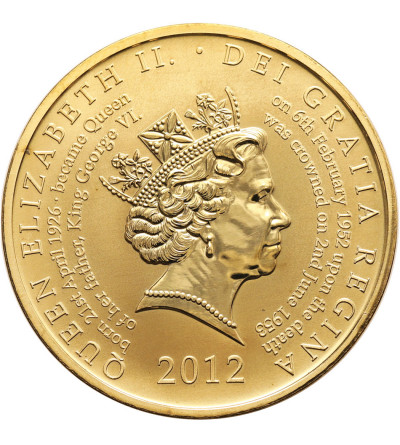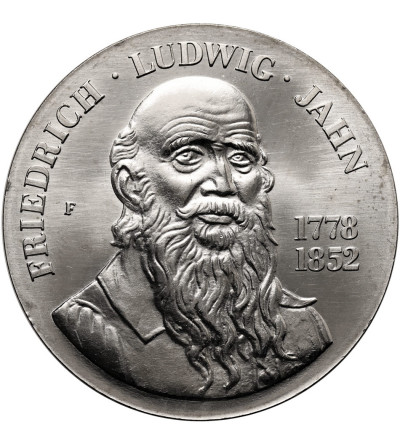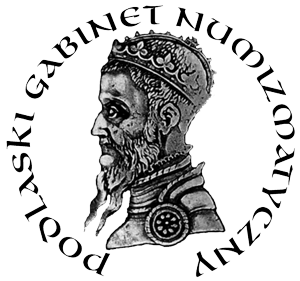






The Netherlands. 2020 Invictus Games Medal, The Hague, Royal Dutch Mint, Cu-Ni 33,0 mm, weight 15,50 g., Condition BU
(There are 16 other products in the same category)
Austria. Vienna Mint Annual Mercury Regent Calendar Medal, Sundays 1984, Bronze 40,00 mm, weight 21,36 g., Condition UNC.
France. Napoleon I Bonaparte, Br medal commemorating the conquest of Illyria, 1809, by Bertrand Andrieu and Alexis J. Depaulis, Bramsen 879, Bronze 40 mm, weight 42,80 g., Condition aUNC, beautiful lustrous brown patina, small edge nick
A beautiful commemorative medal from the Napoleonic wars, a real gem in the collection of any enthusiast of the Emperor of the French.
Belgium, Leopold I (1831-1865). Bronze medal 1852, dedicated to Pierre Theodor Verhaegen, President of the House of Representatives, Belgian politician, founder of the Free University of Brussels, by L. Wiener, Bronze 67,00 mm, weight 124,37 g., Condition aUNC, nice brown patina with luster.
Germany, Meissen. Porcelain medal "Tönendes Erz , Liebe beschert's" ("Sounding the ore, love bestows it"), 10 Mark 1921, porcelain 40 mm, weight 14,76 g., Condition XF+
Germany, Bavaria (Bayern), Ettal. Religious pendant XIX/XX century, St. Benedict and the Miraculous Image of Virgin Mary with the Infant Jesus of Ettal, white metal 28 mm, weight 6,30 g., Condition XF, patina
Belgium, Leopold I (1831-1865), Ghent. Medal 1837 commemorating the Royal Couple at the opening of the Ghent to Termonde railroad line, by Braemnt F., Bronze 49 mm, weight 42,50 g., Condition XF+, nice brown patina
Belgium, Leopold I (1831-1865). Bronze medal 1847-1850 commemorating the opening of the Maison de Sureté pour Femmes in Brussels, by J. Wiener, Bronze 50,00 mm, weight 51,96 g., Condition XF, dark brown patina with luster, local discoloration.
Norway, Olav V (1957-1991). Silver Medal 1968, Wedding of the Norwegian Crown Prince Harald to Sonja Haraldsen, Silver 35 mm, weight 19,80 g. .925, Condition UNC, patina
Germany, Meissen. Medal on the occasion of the re-establishment of the Diocese of Meissen in 1921, porcelain 48 mm, weight 17,37 g., Condition UNC
Belgium, West Flanders. Medallion dedicated to the opening of the Knocke-Maldegem National Road 1936, white metal 30,00 mm, weight 11,65 g., Condition XF
Belgium, Leopold I (1831-1865). Medal 1851 commemorating Minister of Finance Hubert Frère-Orban (1812- 1896), by Adolphe Christian Jouvenel, title on the obverse: FRÈRE - ORBAN, MINISTRE DES FINANCES, inscription on the reverse: ÉTABLISSEMENT / DE L' ÉQUILIBRE DANS LES FINANCES / DE L' ÉTAT. / LOI SUR LES TRAVAUX PUBLICS. / CRÉATION / DE LA BANQUE NATIONALE. / ORGANIZATION / DU SERVICE DU CAISSIER DE L' ETAT. / INSTITUTION / DE LA CAISSE GÉNÉRALE / DE RETRAITE. / CRÉDIT FONCIER. /, Bronze 50 mm, weight 53,40 g., Condition XF+/XF, Beautiful glossy brown patina
Belgium, Leopold II (1865-1909). Medal 1881 commemorating the marriage of Rudolf of Austria and Stephanie of Belgium, by Ed. Geerts, Bronze 32 mm, weight 16,50 g., Condition UNC
France. Medal for carrier pigeons, Ministry of War, 1870, Bronze 68 mm, weight 140,07 g., Condition aUNC, large, impressive medal
France. Napoleon I Bonaparte, medal commemorating Battle of Friedland (East Prussia, now Pravdinsk, Kaliningrad region), 1807, by Bertrand Andrieu and Andre Galle, Bramsen 632, Bronze 40 mm, weight 34,90 g., Condition aUNC, beautiful dark lustrous brown patina.
A beautiful commemorative medal from the Napoleonic Wars immortalizing Emperor Napoleon Bonaparte's decisive victory over Russian General Levin Benningsen , a true gem in the collection of any enthusiast of the Emperor of the French.
Italy (Parma) / France, Napoleon I Bonaparte. Bronze medal Maria Luisa of Austria Duchess of Parma, 1815, by Donaldi, Obverse: Bust facing right, no legend, Reverse: Legend in seven lines: MARIA LUIGIA / PRINC. IMP. ARCID. / D'AUSTRIA / PER LE GR. DI DIO DUCH. / DI PARMA PIAC. / E GUAST. / 1815; in small lettering near the rim, DONALD'I F., Bramsen 1695, Julius 3435, Bronze 40 mm, weight 29,05 g., Condition aUNC, beautiful brown patina with luster, exquisitely preserved piece, original minting. Extremely rare type of medal, virtually unheard of on the collector's market. Few listed copies mostly are later castings.
Belgium, Leopold I (1831-1865). Medal 1839 from the Annual Horse Races, by Braemnt F., Bronze 47 mm, weight 39,20 g., Condition aUNC, beautiful brown patina with luster

The Netherlands. 2020 Invictus Games Medal, The Hague, Royal Dutch Mint, Cu-Ni 33,0 mm, weight 15,50 g., Condition BU
